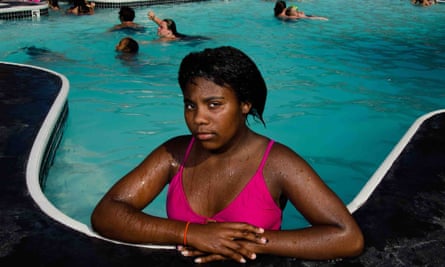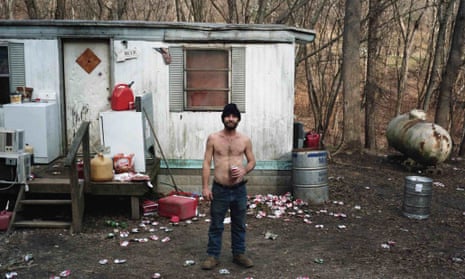Back in 2012, Stacy Kranitz’s photographs of Appalachia caused a storm online when a selection of them were published by CNN. One of the more thoughtful responses to the furore came from Roger May, a documentary photographer and “proud Appalachian”.
“After spending some time on [Kranitz’s] site,” he wrote on his blog Walk Your Camera, “I began to notice a sort of pattern CNN must have used when selecting photos ... They skipped over image after image of ‘everyday lives of the people of Appalachia’ and settled instead for the most common stereotypical images from our collective darkest preconceptions of this region. In short, they perpetuated the visual myth of Appalachia. The KKK and strippers?”
Indeed, CNN chose 16 shots from the 77 in the opening section of Kranitz’s Appalachian series and, in doing so, had distorted its complex dynamic. “I am stunned that they would take my work out of context,” Kranitz said at the time, pointing out that her series was not about the “everyday lives of Appalachian people”, but was instead a wilfully edgy exploration of Appalachian stereotypes.

“I sought out the stereotypes and photographed them so I could then offer a counter,” she wrote. “That is what the project is about. It is meant to be a dialogue about stereotypes: the mythology they create, their value and their role in society.”
Three years on, the Appalachian series, now called As it Was Give(n) to Me, is one of the highlights of Diffusion: Cardiff international festival of photography. Alongside her own arresting shots of the region and its often hard-living residents, Kranitz has used found images and texts including biblical quotations, an archive of local superstitions and confessional notes from a weekly reader’s column called Speak Your Piece in the Mountain Eagle newspaper of Letcher County, Kentucky. One such note reads: “I am 14 years old and my mom dumped me because her boyfriend said he didn’t want me around and she blames it on me. I know you hate me, Mom. You never believed me. I thought you loved me, but you love the new house, phone and dog better.”

“I wanted to figure out a way to highlight the discovery process, how one comes to understand a place through different source materials,” says Kranitz, who was raised in Kentucky but now lives in Los Angeles. “So, the exhibition functions as a personal archive of my experiences.”
She works, she admits, in a “very compulsive manner” – immersing herself in the lives of her subjects and occasionally putting herself at risk. Kranitz has written of a drink-fuelled mountain ride on an ATV (all-terrain vehicle) with a guy called Dozer that ended with it crashing and rolling in the dark. She escaped with only bruises, and was given “a crushed up Lortab [an opioid painkiller] to snort for the pain.”

She is now five years into her immersive Appalachian project. “I like to live out of my car as long as I can,” she tells me. “I begin to slowly deteriorate the longer I do this. It sounds bad, but this is what I want. I believe that I am not making good work unless I am pushing myself into a very uncomfortable place. There is a part of me that thinks there is value in pushing myself to the brink of my own sanity. I’m not sure this is true, but it’s how I have made the work.”
Sailing close to the stereotypes is her methodology, then. “I’m not filled with a noble desire to show the world a certain type of injustice in hopes of remedying it,” she says.

Kranitz’s shots, however confrontational, have a raw energy that is often fractured by thoughtful moments. Poverty, drug and alcohol abuse and machismo are all on display, but so is the beauty of the place and the spirit of its people. “At some moments my experiences completely defy what we know about the region,” she says, “and at others, they dig into and reaffirm the most obvious stereotypes. I don’t want to reinforce mass media’s one-dimensional view of Appalachia as a poverty-ridden region. But I also don’t believe I’m serving the people by making propaganda that ignores the poverty.
It strikes me that it’s much harder to illuminate the everyday lives that define a place than the extreme ones that we – as image makers and image consumers – are vicariously drawn to.
- See As it Was Give(n) to Me at Diffusion: Cardiff international festival of photography until 31 October

Comments (…)
Sign in or create your Guardian account to join the discussion